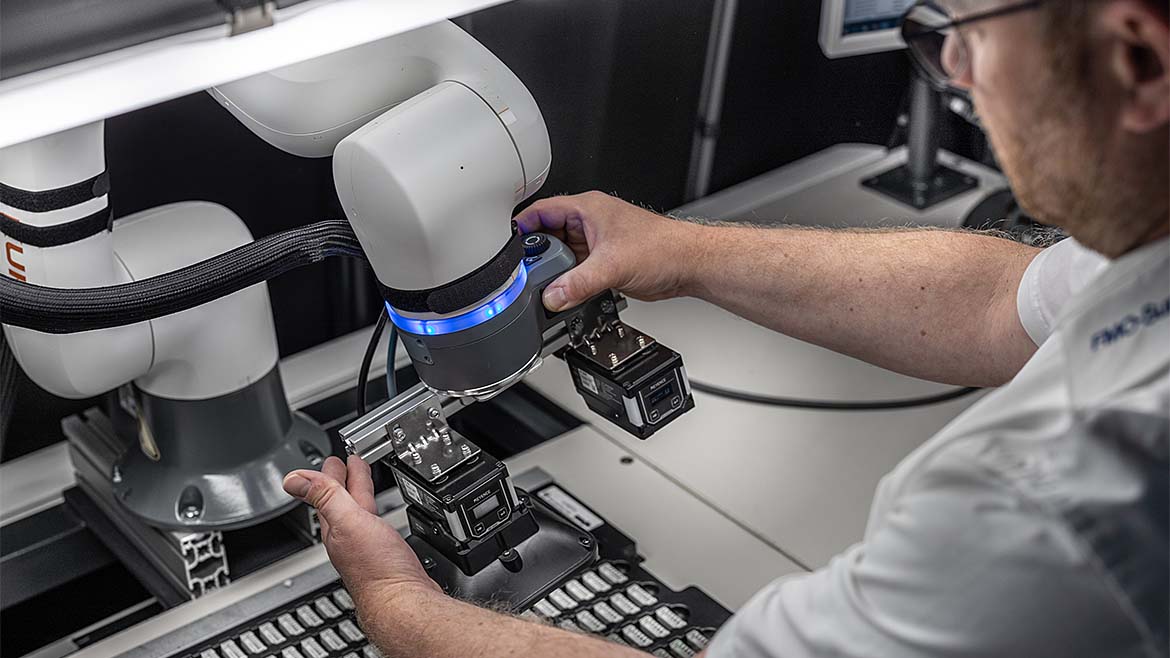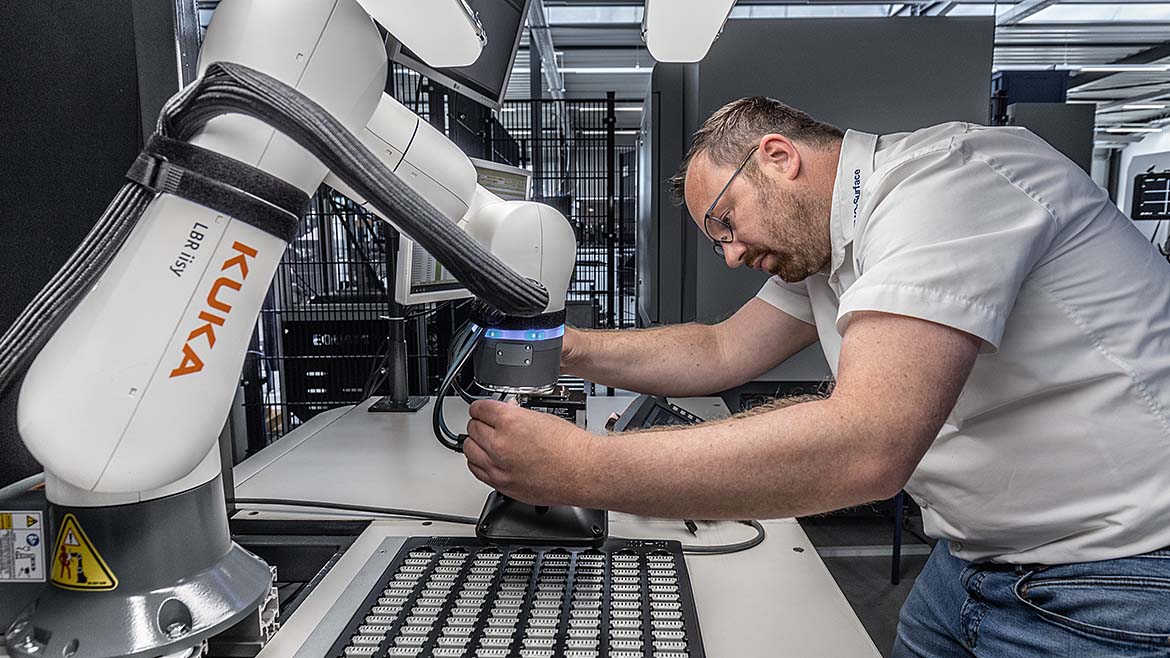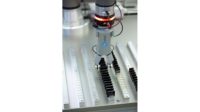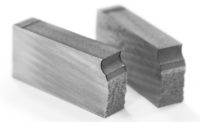Inspecting and testing every part and/or product is the ultimate aspiration in quality control, and automation in many instances allows manufacturers to achieve that goal. And as robots continue to become more capable, easier to use and affordable, the automation of a task by a robot often means that the inspection that was previously done by an operator also needs be automated.
Consider a manufacturer producing plastic injection molded products that automates its packaging process. Prior to automation, a worker visually inspected the products as he or she packaged them. After adding a robot, no one was there to conduct this inspection while they packaged parts, so the facility had to then also automate that visual inspection task. This type of scenario typifies the reason for automated inspection.
When it comes to automating testing and inspection processes, facilities must select the right tools for the job, and that entails the type of robot, its end-of-arm tooling and any other ancillary systems needed. Plus, there is the aspect of whether the automated inspection and/or testing task will be performed in-line where every part is inspected or off-line from the process using statistics to calculate variances/defects per x number of parts.
When considering the type of robot for automating quality/inspection tasks, cobots are often the initial go-to solution, especially in off-line applications when there is less of a need for speed to keep pace with a production line. However, some manufacturers often decide to use cobots and pay the higher price simply because cobots are easy to use. But often the applications in which they’re used don’t leverage the full collaborative functionality of a cobot.

Sometimes they’re used in high-volume applications, where parts rarely change and hand guiding is seldom used. In some cases, hand guiding can’t be used because the tight tolerances of the application require the use of a teach pendant. In high-speed production, or where pinching situations could exist, the cobot may still have to be placed in a cage, thus wasting its highly valued safe functionality.
Because many testing and inspection tasks would benefit from industrial-type robots, automation suppliers have made them as easy to use as cobots. They do so through programming interfaces that are less sophisticated and apply the same software that makes cobots easy to use.
When in-line inspections require very fast robot motions – a robot needs to present the part in various orientations in front of a sensor or move the sensor around a larger/more complex part – an industrial robot in a fenced area is often the only option. In these instances, the robot-sensor communication speed can be just as important as the speed of the robot itself to achieve the fastest cycle times possible.
While cobots are safe, they lack the speed, durability and long reach of industrial robots for certain inspection applications, like in-line inspection of very large parts in nonstop working conditions. It is for this reason that automation suppliers have developed ways to combine the safety aspects of cobots with the speed, durability and long reach of industrial robots. One such example is the technology known as Airskin.
The technology uses a soft, pressure-sensitive outer layer of pads added to a standard industrial robot. The system constantly monitors the internal pad pressure, and if that pressure changes because of contact, the robot stops within 9 ms. This allows the robot to work within the same envelope as the operator and move at speeds considerably faster than a cobot.

But there are plenty of inspection applications that are very suitable to cobots. One of the best examples of cobot use is small batch noncontact inspection, especially if done in a lab off-line, where speed is not critical. In these cases, hand guiding is the ideal way to program the cobot for new parts.
Typically, labs have limited space, and operators are often performing other tasks in the vicinity of the cobot. But since the cobot moves slowly, and its end-of-arm tooling is collaborative in design, no fences are required. The noncontact nature of the inspection minimizes the possibility of a quasi-static collision or “pinching” – a dangerous yet often overlooked risk.
There is a special class of cobots called sensitive robots, which can apply, detect and react quickly to very light forces. These robots can be used to perform sensitive mechanical tests, such as determining the force required to press a button or toggle a switch. Since sensitive robots are within the cobot family, they’re often used in fenceless environments, provided that pinching risks can be mitigated and collaborative tools are used.
With the advent of mobile platforms (Automated Guided Vehicles-AGVs, Autonomous Mobile Robots-AMRs, etc.), a new type of robot is gaining popularity due to its enhanced flexibility – the mobile robot. This is a combination of an articulated robot arm (cobot or industrial) mounted on a mobile platform that’s controlled by an advanced navigation system. These robots are often used in machine shops to transfer parts between machines for different operations, where the machines are not next to each other. In these instances, automated part inspection can be performed between operations at a central station.
In contrast, the traditional approach is to “link” the machines by a long reach stationary robot, or a robot on a slide. This requires the automated inspection station to be part of the cluster. Multiple clusters require multiple inspection stations.
The decoupling of the manufacturing process from the physical plant layout provides manufacturers with a new level of manufacturing flexibility and efficiency.
Another use of mobile robots is the inspection of large parts, where a single sensor-carrying robot on a mobile platform is transported to different locations around the part. At each new location it inspects a section of the part.
Whether an industrial robot, a cobot or a mobile robot, advanced automation allows for more product testing and/or inspection, especially in-line and generates a lot of data. These data streams provide invaluable insights into product quality, performance trends and predictive analytics. But the question is what does a facility do with that data?
To process the data gathered in these operations, artificial intelligence (AI)-driven algorithms analyze data to identify patterns, anticipate potential issues and optimize processes for enhanced quality assurance. This capability is especially advantageous in high-volume production scenarios involving huge amounts of collected data. AI can enhance quality by its ability to draw conclusions based on that data to modify the testing processes as well as part production operations in real time.
The evolution of AI along with robotic systems continue to advance rapidly. Cobots designed to work alongside humans are becoming more popular. In the right applications, these robots are enabling seamless interaction between human expertise and robotic precision. At the same time, innovative technologies allow industrial robots to safely work in the presence of humans in applications requiring speed, reach, durability and strength.
For product testing and quality control, robots offer the flexibility to adapt to additional testing tasks as the needs of the business change. But most importantly, facilities gain the ability to test and/or inspect every part or product to achieve the ultimate in quality control.



